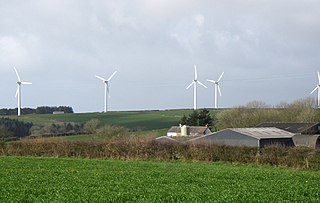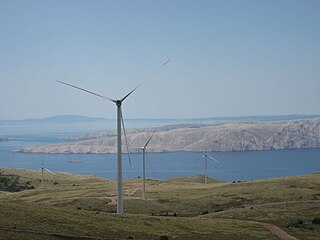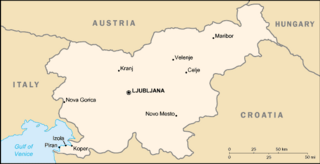For solar power, South Asia has the ideal combination of both high solar insolation and a high density of potential customers.

In Honduras, there is an important potential of untapped indigenous renewable energy resources. Due to the variability of high oil prices and declining renewable infrastructure costs, such resources could be developed at competitive prices.

Renewable energy in the United Kingdom contributes to production for electricity, heat, and transport.
Renewable Energy in Colombia is rapidly emerging as a pioneer in the clean energy transition, showcasing a remarkable commitment to climate action despite its status as a fossil fuel-producing nation. With a robust National Energy Plan extending to 2050, the country has set ambitious targets for diversifying its energy mix by incorporating wind, solar, and geothermal resources. The nation's resolve was further solidified at COP26 with the announcement of a net zero target and a Nationally Determined Contribution (NDC) aiming for a 51% reduction in greenhouse gas emissions by 2030. Significant investments in renewable energy infrastructure, particularly through long-term auctions for large-scale solar and wind projects, are transforming Colombia's energy landscape.

China is the world's leader in electricity production from renewable energy sources, with over triple the generation of the second-ranking country, the United States. China's renewable energy sector is growing faster than its fossil fuels and nuclear power capacity, and is expected to contribute 43% of global renewable capacity growth. China's total renewable energy capacity exceeded 1,000 GW in 2021, accounting for 43.5 per cent of the country's total power generation capacity, 10.2 percentage points higher than in 2015. The country aims to have 80 per cent of its total energy mix come from non-fossil fuel sources by 2060, and achieve a combined 1,200 GW of solar and wind capacity by 2030. In 2023, it was reported that China was on track to reach 1,371 gigawatts of wind and solar by 2025, five years ahead of target due to new renewables installations breaking records. In 2024, it was reported that China would reach its target by the end of July 2024, six years ahead of target.

Wind power in Croatia has been growing since the first wind farm was installed in the country in 2004. During 2021, the energy produced from wind farms amounted to 1,904 GWh. The total wind power grid-connected capacity in Croatia was 1,143 MW as of 2023.
Energy in Ethiopia includes energy and electricity production, consumption, transport, exportation, and importation in the country of Ethiopia.
Renewable energy in Russia mainly consists of hydroelectric energy. Russia is rich not only in oil, gas and coal, but also in wind, hydro, geothermal, biomass and solar energy – the resources of renewable energy. Practically all regions have at least one or two forms of renewable energy that are commercially exploitable, while some regions are rich in all forms of renewable energy resources. However, fossil fuels dominate Russia’s current energy mix, while its abundant and diverse renewable energy resources play little role.

Primary energy consumption in Spain in 2020 was mainly composed of fossil sources. The largest sources are petroleum (42.3%), natural gas (19.8%) and coal (11.6%). The remaining 26.3% is accounted for by nuclear energy (12%) and different renewable energy sources (14.3%). Domestic production of primary energy includes nuclear (44.8%), solar, wind and geothermal (22.4%), biomass and waste (21.1%), hydropower (7.2%) and fossil (4.5%).

Total primary energy supply (TPES) in Slovenia was 6.80 Mtoe in 2019. In the same year, electricity production was 16.1 TWh, consumption was 14.9 TWh.

As of 2018, hydroelectric power stations in the United Kingdom accounted for 1.87 GW of installed electrical generating capacity, being 2.2% of the UK's total generating capacity and 4.2% of UK's renewable energy generating capacity. This includes four conventional hydroelectric power stations and run-of-river schemes for which annual electricity production is approximately 5,000 GWh, being about 1.3% of the UK's total electricity production. There are also four pumped-storage hydroelectric power stations providing a further 2.8 GW of installed electrical generating capacity, and contributing up to 4,075 GWh of peak demand electricity annually.
Hydroelectricity is the second most important renewable energy source after solar energy in Japan with an installed capacity of 50.0 gigawatt (GW) as of 2019. According to the International Hydropower Association Japan was the world's sixth largest producer of hydroelectricity in 2020. Most of Japanese hydroelectric power plants are pumped-storage plants. Conventional hydropower plants account for about 20 GW out of the total installed capacity as of 2007.

Renewable energy in Taiwan contributed to 8.7% of national electricity generation as of end of 2013. The total installed capacity of renewable energy in Taiwan by the end of 2013 was 3.76 GW.

Renewable energy in Albania includes biomass, geothermal, hydropower, solar, and wind energy. Albania relies mostly on hydroelectric resources, therefore, it has difficulties and shortages when water levels are low. The climate in Albania is Mediterranean, so it possesses considerable potential for solar energy production. Mountain elevations provide good areas for wind projects. There is also potentially usable geothermal energy because Albania has natural wells.

Solar power in Switzerland has demonstrated consistent capacity growth since the early 2010s, influenced by government subsidy mechanisms such as the implementation of the feed-in tariff in 2009 and the enactment of the revised Energy Act in 2018. By the end of 2023, solar photovoltaic (PV) capacity had reached 6.4 GW, a notable increase from the 0.1 GW recorded in 2010. Concurrently, the share of solar power in electricity generation has also increased, climbing from 0.1% in 2010 to 5.9% in 2023.

Renewables supply a quarter of energy in Turkey, including heat and electricity. Some houses have rooftop solar water heating, and hot water from underground warms many spas and greenhouses. In parts of the west hot rocks are shallow enough to generate electricity as well as heat. Wind turbines, also mainly near western cities and industry, generate a tenth of Turkey’s electricity. Hydropower, mostly from dams in the east, is the only modern renewable energy which is fully exploited. Hydropower averages about a fifth of the country's electricity, but much less in drought years. Apart from wind and hydro, other renewables; such as geothermal, solar and biogas; together generated almost a tenth of Turkey’s electricity in 2022. Over half the installed capacity for electricity generation is renewables.

Renewable energy in South Africa is energy generated in South Africa from renewable resources, those that naturally replenish themselves—such as sunlight, wind, tides, waves, rain, biomass, and geothermal heat. Renewable energy focuses on four core areas: electricity generation, air and water heating/cooling, transportation, and rural energy services. The energy sector in South Africa is an important component of global energy regimes due to the country's innovation and advances in renewable energy. South Africa's greenhouse gas (GHG) emissions is ranked as moderate and its per capita emission rate is higher than the global average. Energy demand within the country is expected to rise steadily and double by 2025.

In Ukraine, the share of renewables within the total energy mix is less than 5%. In 2020 10% of electricity was generated from renewables; made up of 5% hydro, 4% wind, and 1% solar. Biomass provides renewable heat.

By the end of 2016 Austria already fulfilled their EU Renewables Directive goal for the year 2020. By 2016 renewable energies accounted to 33.5% of the final energy consumption in all sectors. The renewable energy sector is also accountable for hosting 41,591 jobs and creating a revenue of 7,219 million euros in 2016.

The electricity sector in Bulgaria is an important part of energy in Bulgaria and is highly diversified. As of 2021 nuclear power accounts for 34.7% of Bulgaria's power, coal power provides 39.4%, while renewable energy provides 15.8% of the country's electricity needs.
















